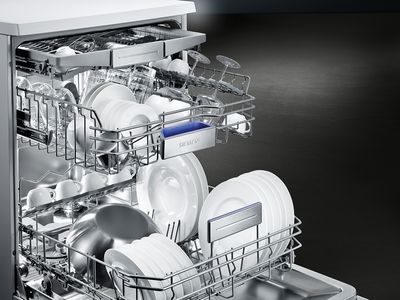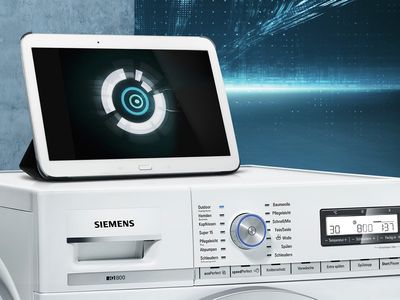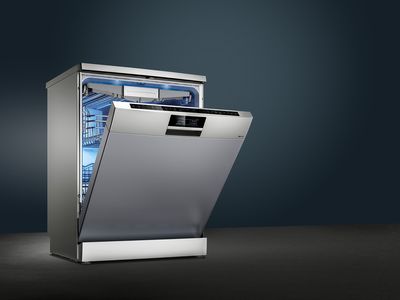Tips for perfectly clean results. Make sure that your dishwasher is loaded correctly and not overstacked.
Check that the spray arms can spin and are not blocked. Plastic should be put in the upper tray where the heat is less intense and won't warp or fade the material. Avoid wedging things in. Cutlery, closures and small items should go in the cutlery holder. Knives and forks will wash better facing up but can be stacked facing downwards for safety reasons. Cups, bottles and bowls belong in the bottom tray. Check out more tips for loading and unloading your dishwasher.
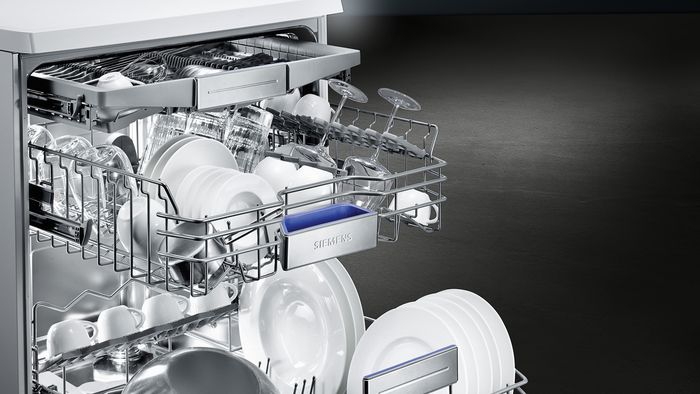
How to load a dishwasher
Loading instructions for the upper basket:
A. Position hollow vessels so that water cannot collect in them.
B. Do not stack dishes. This will prevent upper parts from being sprayed with water from below, and the dishes will not be cleaned properly.
C. Position cups and bowls at a slight angle in order to prevent water accumulation in their bases.
D. Do not place hollow vessels too diagonally or directly in the corner area. This ensures that dishes can be rinsed properly.
E. If devices have a tab tray, do not load them with crockery or fragrance dispensers, because this can prevent the tab from dissolving properly.
Do not allow items such as small spoons to pass through the crockery basket. These could block the spray arms and prevent the entire load from being cleaned properly.
Loading the lower basket
A. Do not place dishes on top of each other or the upper parts will not be sprayed with water from below and the dishes will not be cleaned completely.
B. Avoid covering flat dish surfaces. This will prevent the dishwasher from removing food spills or stains on the dishes.
C. Do not overload the cutlery basket or the dishwasher will not be able to clean these items sufficiently. Place cutlery parts where the dishwasher can clean them.
D. Place hollow vessels so that no water can collect in them. Do not allow items to protrude through the crockery basket. This will ensure that the spray arm does not get blocked, and the dishwasher will be able to wash the dishes properly.
Tip: Strongly soiled dishes (pots) should be placed in the basket. The water spray is stronger here, so the dishwasher will clean them more effectively and you will get a better wash result.
The cutlery basket*
Always put your cutlery into the cutlery basket* unsorted with the pointed side down. To avoid injury, place long, pointed items and knives on the knife shelf*
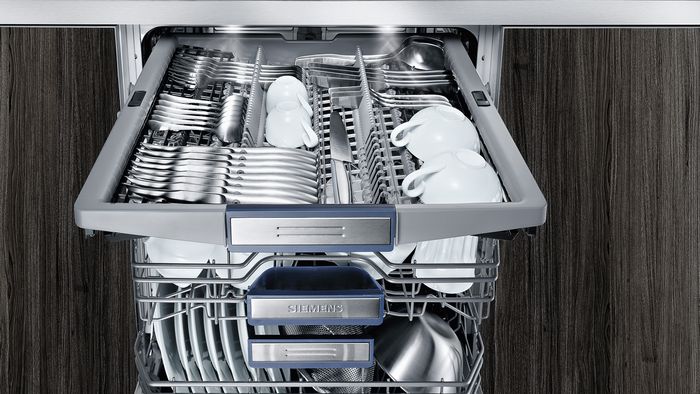
The cutlery drawer*
When you load the dishwasher, place the cutlery as shown in the cutlery drawer. Loading items separately will facilitate the removal of cutlery after rinsing. You can remove the cutlery drawer.
Tips
A. Place knives and other sharp-edged or pointed cutlery parts downwards so that you do not accidentally injure yourself.
B. Do not stack the cutlery; proper sorting will make your cutlery safe and spotless.
C. Place spoons and ladles at an angle. This will prevent water accumulations and stains.
Depending on the configuration of your dishwasher, you may be able to fold down the side shelves to create more space for higher cutlery components.
In addition, you can fold down the front row of spikes to accommodate wider handles.
Make sure tabs dissolve
When you load the dishwasher, make sure that no dishes are placed above or in the tab tray. These can block the lid of the cleaning chamber. Blocked cleaning covers reduce the cleaning effect (by delayed dissolution), leading to cleaning residue and inefficient dishwashing.
How to empty a dishwasher properly.
Always unload from the bottom upwards to stop droplets from the top rack falling onto dishes below it. Avoid leaving washed dishes in the dishwasher with the door closed for too long. This will reverse the drying process. Once heating of the dishes is complete, condensation will form on the cooled dishes.
Tip:Remove dishes about 30 minutes after the programme ends.
Tip:Hot dishes are shock-sensitive! Allow them to cool down in the dishwasher.
Note: After the end of the programme, there may still be water droplets in the interior of the appliance. This won’t affect the drying of the dishes.

